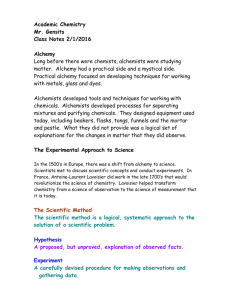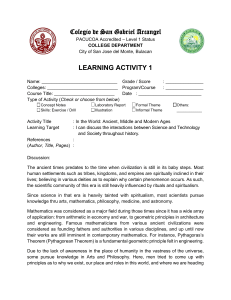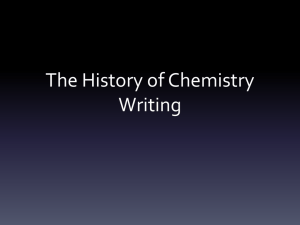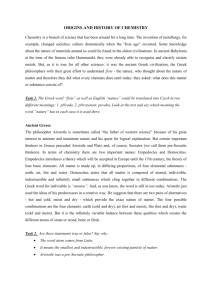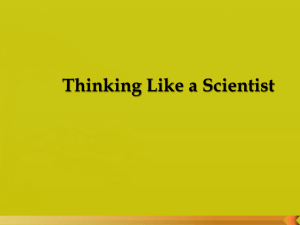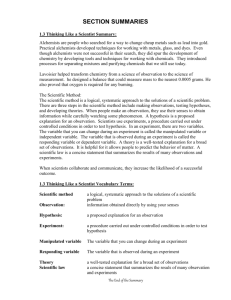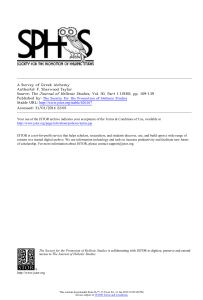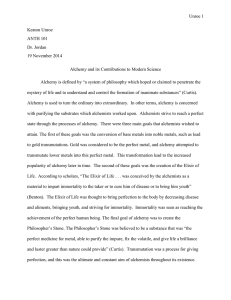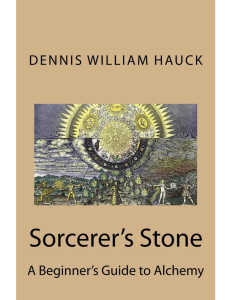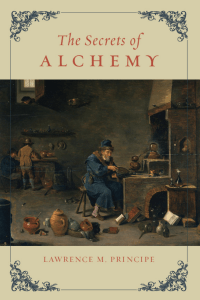Lecture on Alchemy - Bryn Mawr College
advertisement
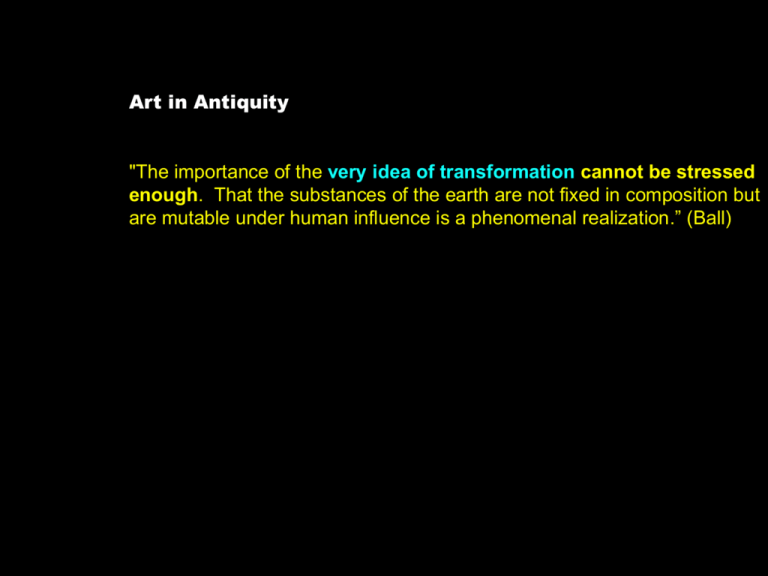
Art in Antiquity "The importance of the very idea of transformation cannot be stressed enough. That the substances of the earth are not fixed in composition but are mutable under human influence is a phenomenal realization.” (Ball) (Elkins) “ALCHEMY is the art that knows how to make a substance no formula can describe. And it knows the particular turmoil of thoughts that find expression in colors. Alchemy is the old science of struggling with materials, and not quite understanding what is happening…exactly as every painter does each day in the studio.” “… the ingredients of painting have never been too different from those of alchemy.” “…instead of learning words, painters learn substances….That is the problem that confronts artists, because they are interested in nuances of mixture…That close observation is sometimes lost today, when we think we know what substances are. But artists and alchemists have to keep their eye on everything, because they do not know what to expect.” Three aims of the alchemists: The Great Work = the search for the Philosopher’s Stone, or the Stone, or the Tincture - highly abstract and allegorical, highly complicated with many steps (see alchemical texts to the Great work on McLean’s site) - refers to an ideal, something more pure than any actual material, - may have also been a symbol for Christ for some alchemists; like Christ, could transform the imperfect, base metals, into purity, i.e. gold. - general belief that the elements of mercury, sulfur and salt (note, an element to alchemists) were components of all matter, including the Stone. Transmutation: interconversion of substances, with the purpose of returning materials to most pure state, i.e., gold. To the medieval alchemist’s mind the different elements were but the same original substance in varying degrees of purity. Astrology and Numerology: 7 metals, 7 planets Mercury Silver Gold Lead Iron Copper Tin Mercury Moon Sun Saturn Mars Venus Jupiter Two classes of those who did alchemy ” laborants (apothecaries and pharmacists) "puffers whose brains were troubled with the smoke of their own furnaces" chrysopoeian adepti : "scholars" of transformation for spiritual clarity, who sought theory amid alchemy laboratory: from labor\: labor, daily struggle with substances and ora: "to pray" ; indicates accurate perspective of alchemical work to spiritual life: meditating and inward looking color is the crucial link between laborants and adepti. Color was their chief indicator of transformation. Alchemy influences art as a practical craft of transformation to provide colors for artists For alchemists, the world was made of substances Alchemical Table of Elements Symbol Alchemical name Chemical name Lye Blue Vitriol Green Vitriol salt cinnabar verdigris Chemical symbol Copper Sodium hydroxide Cu NaOH (potassium hydroxide) (KOH) Copper sulfate Iron sulfate CuSO4 FeSO4 ? sodium chloride potassium chloride (any cation) (any anion) mercury sulfide NaCl KCl Neutral copper acetate Basic copper acetate Cu(O2C2H3)2 Cu2(O2C2H3)3 .OH HgS Medieval Art, Medieval Materials Art in Medieval Era • Culturally, move from antiquity towards middle ages associated with the impact of Christianity • Medieval art largely devotional, done by monks, with a limited palette, and like alchemy, steeped in symbolism. • majority of art is religious and done by the religious: monks. Monks, who were also alchemists, learned methods of pigment handling and manufacture. • Later in Middle Ages, painting moved away from religion to secular realm. Art became associated with trades & guilds, but still tied to alchemists. As such art was considered a lowly trade, below music and poetry. Medieval media: Wood panel surfaced with size then gesso (CaSO4=gypsum, or chalk +glue) t Fresco also used tempera Stained glass Enamels (glazes, essentially glasses, on metals) pigments list: blues: green: red: yellow:
